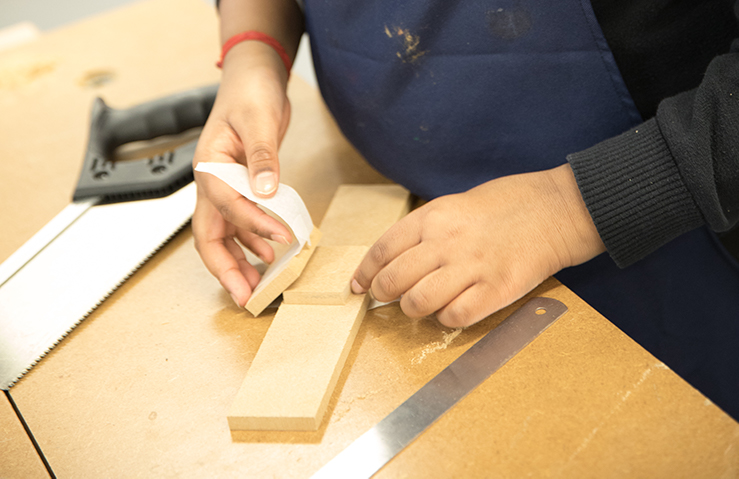Design and Technology is Taught By
| Ms D Hall-Hinds | CTL Design and Technology & Food Preparation and Nutrition Teacher |
| Mr L. Oloyede | D&T Teacher & Student Leadership Co-ordinator |
| Ms G. Nessa | D&T Teacher |
| Ms H. Howe | D&T Teacher |
| Ms S. Danis | D&T Teacher |
| Ms Z. Jalil | D&T Teacher |
KS3
Curriculum content and aims
KS3 pupils studying Design & Technology are taught a combination of all four disciplines during Year 7, 8 and 9 This provides a fantastic foundation for students to pursue further study at GCSE in one or two of their chosen options, and indeed onto further education and potential career opportunities. During KS3 pupils are exposed to a wide range of exciting projects.
Year 7 - On a carousel
Graphic Products - Stem Project General DT skills)
Resistant Materials - Stem Project (General DT skills)
Textiles - Pencil case Project
Food Technology - Hygiene , Health and Safety, Healthy Eating project which builds on simple cooking techniques.
Year 8 - On a carousel
Graphic Products - Chocolate Project (General DT skills)
Resistant Materials - Chocolate Project (General DT skills)
Textiles - Cushion Project
Food Technology - Healthy Eating using different cooking methods to cook healthy food
Year 9
Graphic Products - Specialist skills Project (General DT skills)
Resistant Materials - Specialist skills Project (General DT skills)
Textiles - Specialist Skills Project ( General DT skills)
Food Technology - Introduction to Food Science
GCSE Food Preparation and Nutrition
This new GCSE Food Preparation and Nutrition is an exciting and creative course which focuses on practical cooking skills to ensure students develop a thorough understanding of nutrition, food provenance and the working characteristics of food materials. At its heart, this qualification focuses on nurturing students' practical cookery skills to give them a strong understanding of nutrition. Food preparation skills are integrated into five core topics:
-
Food, nutrition and health
-
Food science
-
Food safety
-
Food choice
Food Provenance
Food Preparation and Nutrition Specification
https://www.aqa.org.uk/subjects/food/gcse/food-preparation-and-nutrition-8585
Design and Technology (Graphic Products, Resistant Materials and Textiles)
This course is designed to provide opportunities in designing, making and evaluating. Students are taught research techniques in order to produce a sound basis for design. They will use pictorial drawing and working drawings to British Standard in order to develop the given product. Modeling techniques are regularly used.
You will need to do regular homework to achieve a good standard of design work;
You will need to keep a design folder for coursework and meet departmental and examination deadlines.
How will you be assessed?
- 50% NEA (one final year project)
- 50% final written examination
Students who successfully complete this course will be awarded a GCSE certificate in Design & Technology (Northern Examination & Assessment Board)
Resistant Materials & Graphic Products: Mr Oloyede, Ms S Danis, Ms Jalil and Gulabun Nessa.
For general advice about Technology options see your current Technology teacher
Useful websites:
www.aqa.org.uk/subjects/design-and-technology
www.bbc.co.uk/schools/gcsebitesize
Who parents/carers can contact if they need more information about our syllabus:
Food Preparation & Nutrition and DT: Ms D Hall-Hinds
Graphic Products and Resistance Materials: Mr L Oloyede, Ms S Danis, Ms Z Jalil G. Nessa




.png)






.png)

.png)
.png)
.png)